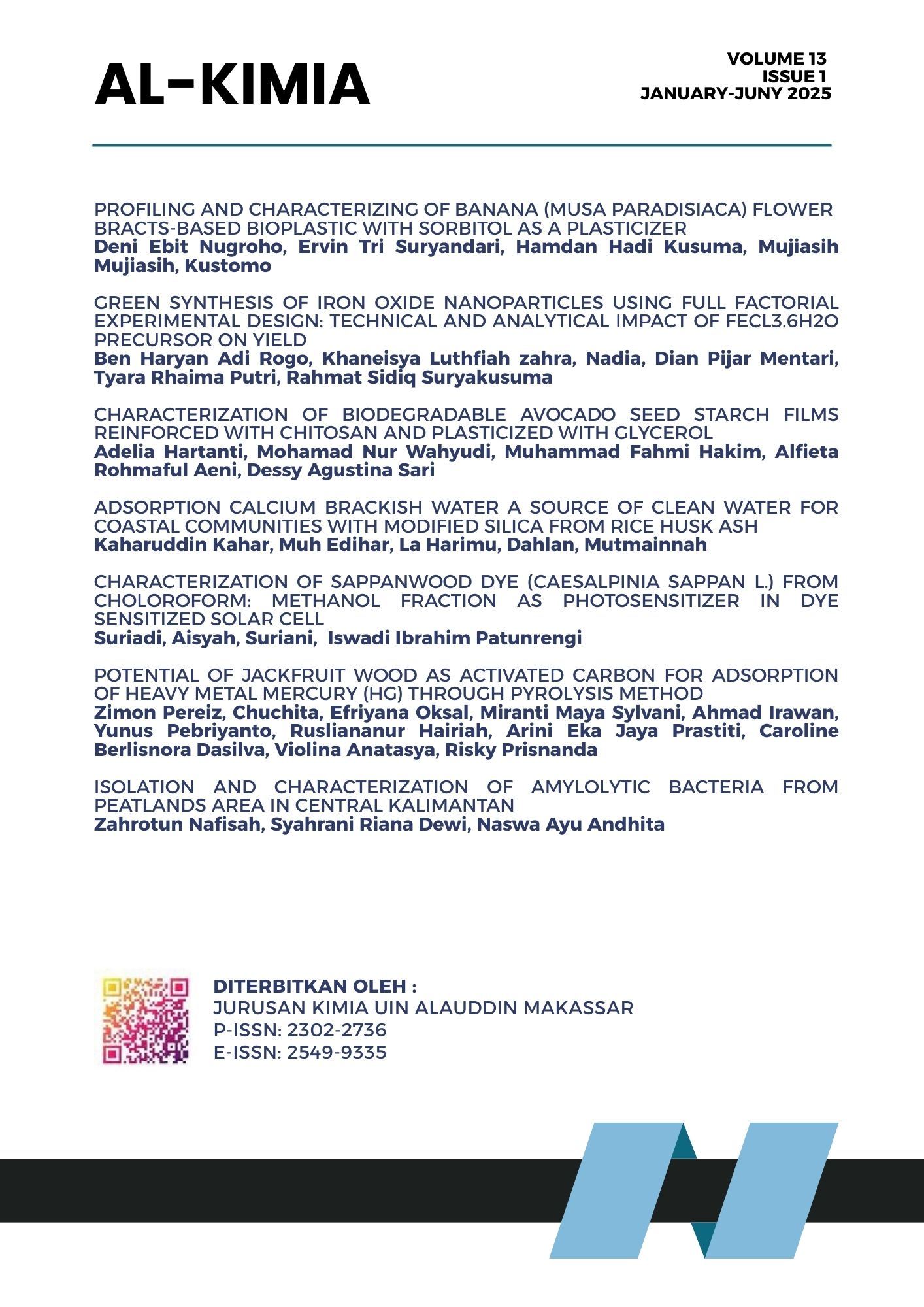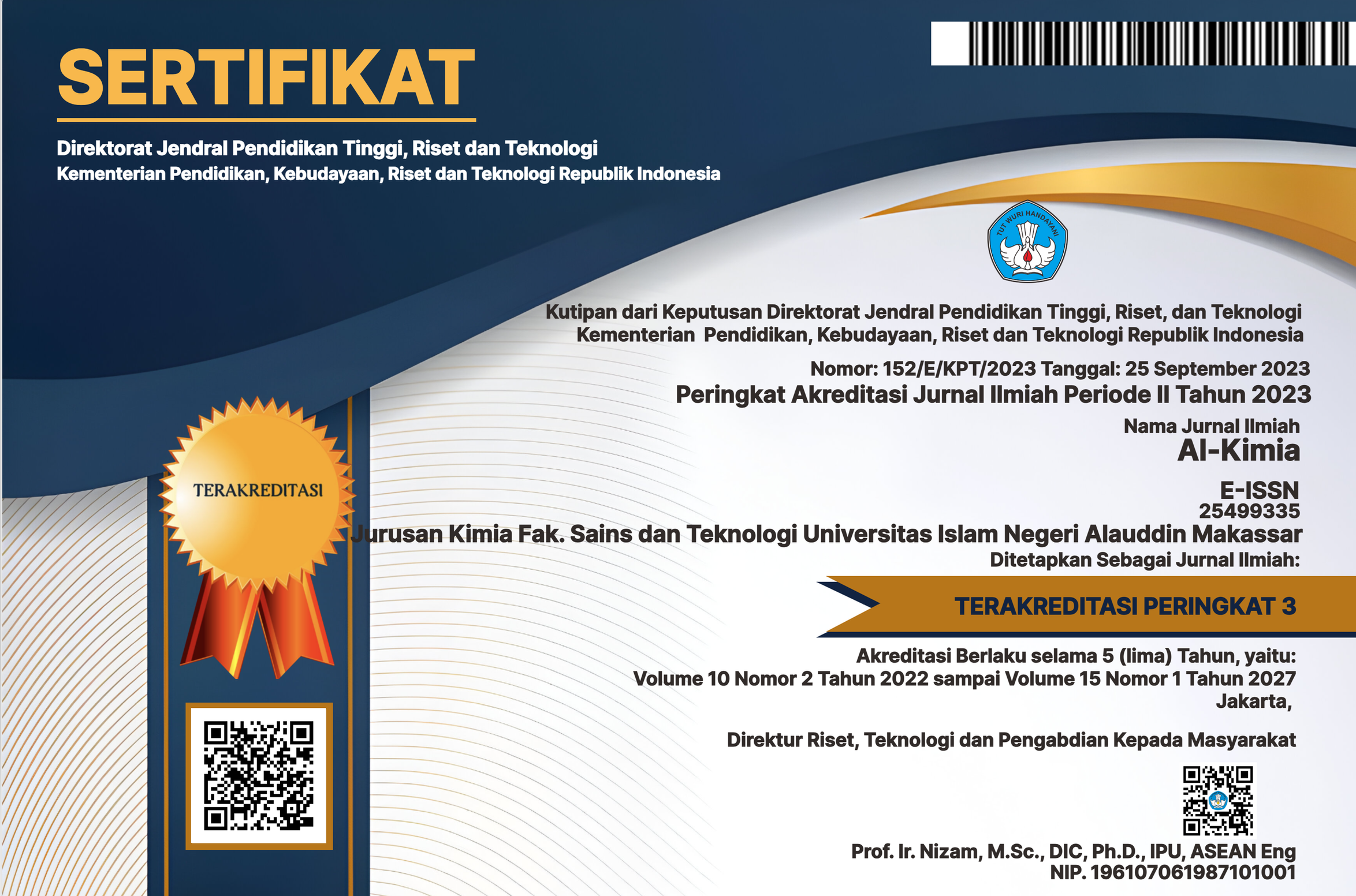Characterization of Biodegradable Avocado Seed Starch Films Reinforced with Chitosan and Plasticized with Glycerol
Keywords:
bioplastic, bioplastics, mechanical properties, plasticizer, renewable resources, sustainable materialAbstract
Researchers have developed biodegradable bioplastics from renewably sourced natural materials in response to the environmental consequences of synthetic plastics. This study looks at how different amounts of glycerol and chitosan affect the properties of bioplastics made from avocado seed starch. This study evaluated the mechanical, hydrophilic, and degradation properties in terms of tensile strength, elongation at break, thickness, water absorption, and structural stability over time. The results showed that an increase in glycerol content improved flexibility and elongation but impaired tensile strength and water resistance. On the other hand, the increase of chitosan concentration contributes to a significant enhancement of tensile strength, water resistance, and stability. The mixture A3 (1 ml glycerol, 4.5 g chitosan) was thought to have good mechanical stiffness (16.560 ± 3.661 MPa) and water resistance. On the other hand, B1 (2 ml and 2.5 g) had better elasticity (elongation: 32.299 ± 8.910%). Upon performing degradation analysis, B-series samples exhibited a high hydrophilicity, which caused faster breakdown as opposed to A-series samples. Avocado seed starch plasticized by a combination of chitosan and glycerol shows promise as an environmentally friendly plastic, and this study shows a way toward fine-tuning both mechanical and hydrophilic properties to produce biodegradable bioplastics
Downloads
References
Abdullah, A. H. D., Putri, O. D., & Sugandi, W. W. (2019). Effects of starch-glycerol concentration ratio on mechanical and thermal properties of cassava starch-based bioplastics. Jurnal Sains Materi Indonesia, 20(4), 162. https://doi.org/10.17146/jsmi.2019.20.4.5505
Downloads
Published
Versions
- 2025-07-27 (2)
- 2025-06-29 (1)
How to Cite
Issue
Section
License
Authors who publish with this journal agree to the following terms:
1) Authors retain copyright and grant the journal right of first publication with the work simultaneously licensed under a Creative Commons Attribution License that allows others to share the work with an acknowledgement of the work's authorship and initial publication in this journal.
2) Authors are able to enter into separate, additional contractual arrangements for the non-exclusive distribution of the journal's published version of the work (e.g., post it to an institutional repository or publish it in a book), with an acknowledgement of its initial publication in this journal.
3)Authors are permitted and encouraged to post their work online (e.g., in institutional repositories or on their website) prior to and during the submission process, as it can lead to productive exchanges, as well as earlier and greater citation of published work (See The Effect of Open Access).



